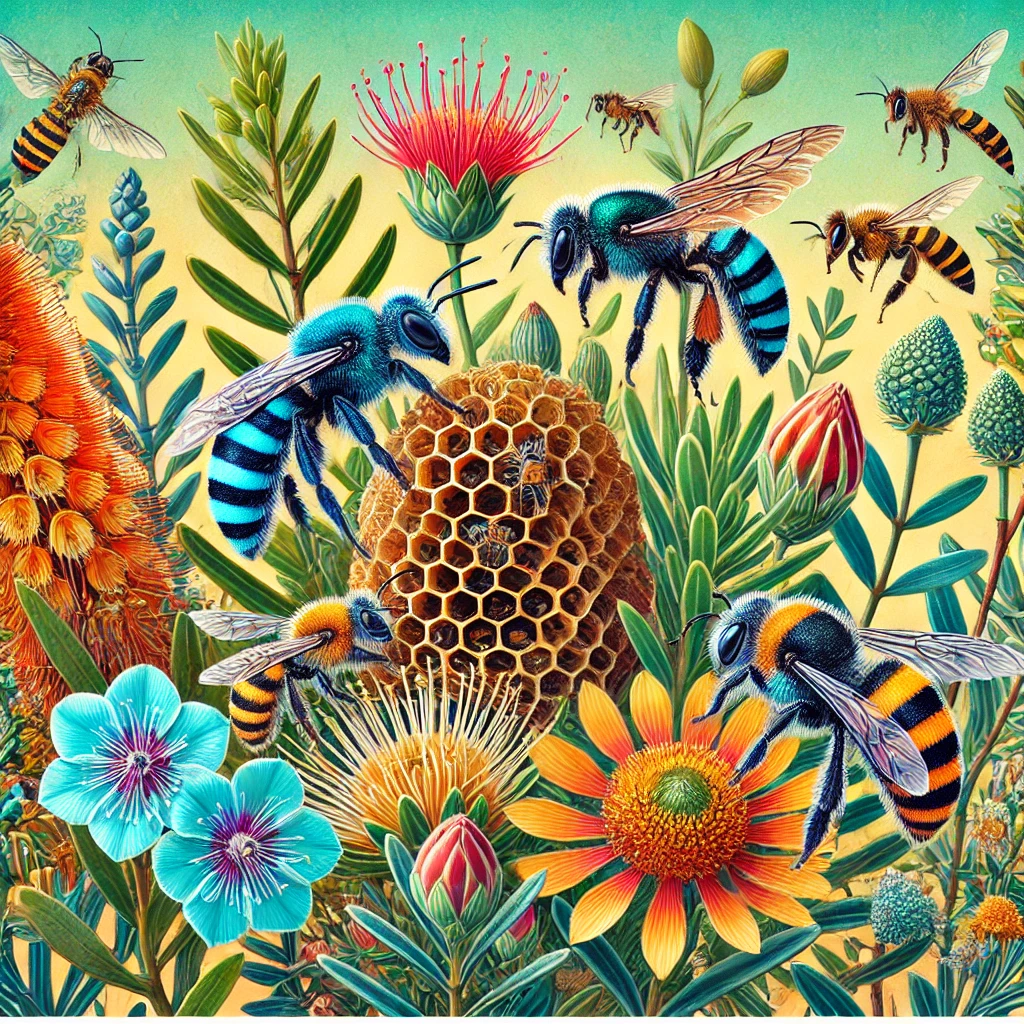Introduction
In the world of Australian native bees, few species capture the imagination quite like the Tetragonula carbonaria. These tiny, stingless bees are not only important pollinators but also extraordinary architects, known for their unique spiral brood combs. They produce a distinct honey prized for its flavor and rarity. Let’s explore the world of Tetragonula carbonaria and discover what makes them so special.
Meet Tetragonula Carbonaria
Tetragonula carbonaria, one of Australia’s stingless bee species, is native to the eastern parts of the country. These bees are tiny, measuring just 3-4mm, and are completely harmless due to their lack of a sting. Instead, they rely on their ability to swarm as a defense mechanism.
They live in highly social colonies, often numbering in the thousands, and thrive in warm, subtropical climates.
The Signature Spiral Brood Comb
One of the most distinctive features of Tetragonula carbonaria is their incredible spiral brood comb. This structure, built by worker bees, serves as the nursery for developing larvae.
- Why Spiral?
The spiral design optimizes space within the hive, allowing the colony to expand efficiently. It also aids in maintaining a consistent temperature and humidity level essential for the developing brood. - How It’s Built
Workers meticulously construct cells in a spiral pattern, layering new cells outward as the colony grows. The result is a mesmerizing architectural masterpiece that showcases the bees’ ingenuity.
Tetragonula Carbonaria Honey: A Unique Flavor
The honey produced by Tetragonula carbonaria, often referred to as “sugarbag honey,” is a rare and delightful treat.
- Taste Profile
Sugarbag honey is darker, tangier, and more complex than traditional honey. Its flavor has notes of citrus and caramel, with a slightly sour undertone. This is due to the fermentation process that occurs within the hive, giving it a unique taste that food enthusiasts adore. - Harvesting
Unlike European honeybees, these bees produce small quantities of honey, around 1kg per year per hive. This makes their honey a precious commodity, often used sparingly as a gourmet ingredient.
Why Keep Tetragonula Carbonaria Bees?
Keeping Tetragonula carbonaria bees has numerous benefits:
- Pollination Powerhouse: They are excellent pollinators for both native plants and gardens.
- Safe for Families: Their stingless nature makes them ideal for urban backyards.
- Educational Value: Observing their unique hive structures and behavior is a fascinating hobby.
How to Support Tetragonula Carbonaria
To help these bees thrive, consider these tips:
- Plant Native Flora: Provide a variety of native flowering plants for food.
- Install a Hive: Purchase or build a hive for Tetragonula carbonaria and place it in a shaded, protected area.
- Avoid Pesticides: Chemicals can be harmful to these delicate creatures.
Conclusion
Tetragonula carbonaria is more than just a bee species; they’re tiny engineers, environmental allies, and creators of an extraordinary honey experience. Whether you’re a backyard beekeeper or simply a bee enthusiast, these remarkable insects offer endless fascination and ecological value.
Have you encountered Tetragonula carbonaria in the wild or kept them as backyard companions? Share your experiences and tips in the comments below!







